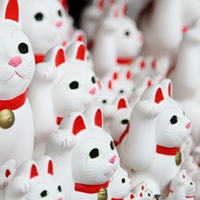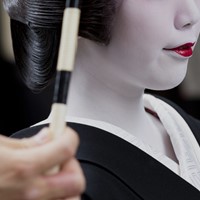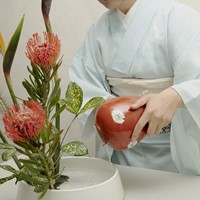Japanese Honorifics and Their Meanings Explained

Every language has different ways of showing respect and denoting one’s place in society. Japanese is no different with the use of honorifics being a key indicator of respect, authority, and interpersonal relationships. However, when studying the Japanese language, this can often be confusing and difficult to apply.
Keep reading as we explain the meanings behind the most common Japanese honorifics, and where you can expect to hear them; how honorifics are used in various situations, such as at work; and how to best use honorifics yourself. Integrating this information into your Japanese vocabulary can help create a more natural-sounding cadence to your speaking.
Most Common Japanese Honorifics Explained

An honorific is a way to address someone. In Japan, it is generally a suffix attached to the person’s name. There are many possible honorifics that can be used in different situations, but here we will cover the most common ones.
San (さん)
The standard Japanese honorific is “-san” (さん). It is often compared with the English honorifics of Mr., Mrs., Miss, Ms., but it is actually used even more commonly in Japan.
It is considered a neutral honorific, and is often the go-to when speaking to or about anyone you do not know or are not well acquainted with. It can also sometimes be attached to a business name to refer to the owner of the business. If you are unsure of which honorific to use with someone, “-san” is usually a safe choice.
Sama (さま)
The most common formal honorific is “-sama” (さま). This honorific denotes a sense of superiority and a clear difference in rank. It is often used in business when talking to clients and guests. You may hear it in shops and restaurants as the customer is referred to as okyaku-sama (お客様). This is also the honorific used for deities, the emperor, and others of high stature.
Kun (くん) & Chan (ちゃん)
The most common informal honorifics are “-kun” (くん) and “-chan” (ちゃん), which are often grouped together.
“-kun” is most commonly used to refer to boys and young men. It is usually used when talking to someone of a lower status than you, whether this be by age or social stature. It also indicates a level of closeness, so is most commonly used among family, friends, and other close relationships.
“-chan” is used similarly for young girls, but has a wider range of use. It can be used well into adulthood and is also commonly used for pets, babies of both genders, and even grandparents. It is considered cute and is generally used among people you are close to. It could be considered patronizing or rude to use it with someone you don’t know well.
Sensei (先生)
Another important honorific is “-sensei” (先生), which is used for teachers, as well as various other professions that require great skill and knowledge. For example, it is normal to refer to a doctor using “-sensei.” You may also hear it referenced with lawyers, academics, novelists, and other similar professions.
Japanese Honorifics for Work
In Japan, honorifics are commonly used in the workplace as it is considered a more formal situation. The most common honorific to use for coworkers is “-san.” When speaking with someone who has greater authority, there are specific honorifics that should be use depending on your relationship with that person.
- Department manager = -bucho
- Section manager = -kacho
- Chairman = -kaicho
- Company president = -shacho
Superiors such as managers and senior department staff, who have greater authority in the company, may drop the honorific when talking to you, but this should never happen in reverse. Using the correct honorifics in the workplace is essential for creating a comfortable work environment in Japan.
Related: Japanese Job Titles in English
How to Correctly Use Japanese Honorifics

The first thing to note is that all common honorifics listed above are used in conjunction with a name, such as “Smith-san.” Sensei is the one exception, as it can be used independently or with a name.
Generally, the honorific should be attached to the end of a last name, as this is the most common way of addressing people in Japan. With the use of “-kun” and “-chan,” first names and nicknames are also used as a form of endearment, since you are close to the person you are addressing or talking about.
How to Address Envelopes with Japanese Honorifics
While in Japan you may be in the situation of needing to send a letter. When addressing the letter, “-sama” should be used after the person’s name. This also holds true for emails. If you are writing to a teacher, professor, or doctor, you can use “-sensei” instead of “-sama.” If you need to self-address an envelope, you can use the honorific “-gyo” (行).
When Are Japanese Honorifics Inappropriate?
A common mistake when first learning Japanese is using an honorific in conjunction with your own name. Honorifics should only be used to address other people, never in reference to yourself.
Also, if someone you are talking to has asked you to drop the honorific, it is important to do so. To continue using it may make them feel uncomfortable or distanced from you. If you are talking with someone from your inner circle, honorifics may not be necessary.
Finally, it is better to play it safe when you are unsure of which honorific to use. Age, social status, career, and your relationship all factor into which honorific is appropriate, and it can even be difficult for Japanese children to know which to use. Fortunately, Japanese people tend to be forgiving of any misuses when spoken by a foreigner, so we suggest using the neutral honorific “-san” when you are unsure which is necessary.
Improve Your Japanese Language Skills
Honorifics are considered a key aspect of the Japanese language and are very important for speaking at a proficient level. With this knowledge you should be able to improve your understanding and begin to have more natural communication.
To learn more about the ins and outs of Japanese culture and language, visit our guide to living in Japan, where we explore all of the aspects that making living in Japan an eye-opening experience. There you can find a variety of information including the best Japanese learning apps and a comprehensive list of Learning Japanese for Free: Great Online Tools.
















